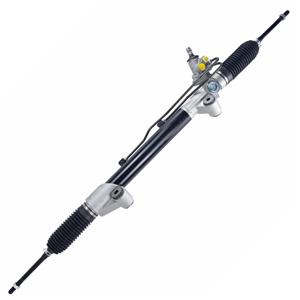-
The hydraulic fluid used in hydraulic power steering systems must have specific properties to ensure smooth operation and long life of the system. Hydraulic fluids are mainly divided into the following types: 1. Mineral Oil 2. Synthetic Hydraulic Fluid 3. Semi-Synthetic Hydraulic Fluid 4. Specialty Hydraulic Fluids
-
Electric power steering system (EPS) is one of the most commonly used steering system types in the world. Unlike traditional hydraulic power steering system, electric power steering system directly provides steering assistance through electric motor.
-
Mercedes-Benz uses EPS in many of its models, especially in more economical car series such as the A-Class and B-Class, where electric power steering is more commonly used. At the same time, high-end models such as the E-Class and S-Class are gradually transitioning to EPS to improve fuel efficiency and reduce maintenance costs.
-
General Motors has used hydraulic power steering technology on many classic models, such as Chevrolet, Cadillac and other brands, but General Motors has gradually applied electric power steering technology to many of its models since around 2010.
-
The electric power steering system has: Electrical failure Motor failure Electronic control unit (ECU) failure Sensor failure Mechanical failure Environmental factors Improper maintenance
-
When the system fails, steering wheel operation becomes extremely difficult, especially when driving at low speeds or parking. This is because without the hydraulic power assistance, the driver needs to rely entirely on their own strength to turn the steering wheel, and without the help of the hydraulic system, the amount of force required to turn the steering wheel may increase significantly.
-
Amber or light yellow power steering fluid is usually a mineral oil-based power steering fluid. This fluid is usually a clear light yellow or light amber color when new, and it may gradually darken to a darker amber or brown color over time.
-
The launch of the power steering system is an important part of its innovation history. General Motors officially launched the power steering system in 1951, and it was first used in some models of the Cadillac brand.
-
2002-2025
Do racing cars have power steering?
Whether a car is equipped with power steering depends on many factors, including the type of car, the nature of the competition, and the needs and preferences of the drivers. Although power steering can reduce driver fatigue and improve handling stability, it can also increase the weight and complexity of the vehicle and reduce steering feedback.
-
The answer is yes, the electric power steering system is indeed equipped with a fuse. In fact, most electronic systems in modern cars, including EPS, have dedicated fuses or relays. The main function of the fuse is to protect the circuit from damage to the system due to excessive current or circuit short circuit.




